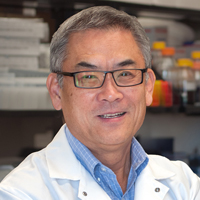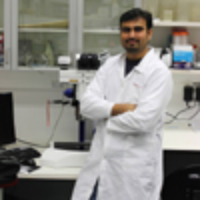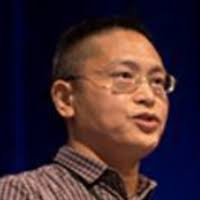Laparoscopic anterior transgastric cystogastrostomy for the treatment of pancreatic pseudocysts
Published on: 6th April, 2020
OCLC Number/Unique Identifier: 9272371062
Introduction: Pancreatic pseudocysts (PPs) are mostly delayed complications of acute or chronic pancreatitis and trauma. Pancreatic pseudocysts are usually managed by supportive medical treatment without surgical procedure. All the surgical interventions (percutaneous, endoscopic or surgical approaches) are based on the location, size, symptoms, complications of the pancreatic pseudocyst and medical condition of the patients. Recently, laparoscopic cystogastrostomy has become most appropriate approach especially for retrogastric pancreatic pseudocysts. In this study, we would like to report results of laparoscopic anterior transgastric cystogastrostomy by using linear articulated endo GIA stapler (Covidien medium thick purple) and versa-lifter (versa lifter®, laparoscopic retractor, manufactured by protomedlabs, France) in 14 pancreatic pseudocysts patients.
Methods: We retrospectively analyzed data of patients with pancreatic pseudocysts treated by laparoscopic anterior transgastric cystogastrostomy from September 2010 to October 2014. All of the patients were controlled for the recurrence of pancreatic pseudocysts in February 2017.
Results: 14 patients with pancreatic pseudocysts were managed by laparoscopic anterior transgastric cysto-gastrostomy. Conversion was performed in only one patient (7%). There were no symptoms and signs of recurrence of pancreatic pseudocyst during on average 43.6 months follow up time.
Conclusion: Laparoscopic cystogastrostomy by using articulated linear endo-GIA stapler and versa-lifter is a safe and effective method for management of appropriate retro-gastric pancreatic pseudocysts.
Lateral Pancreato-Jejunostomy in Chronic Pancreatitis: An appraisal of 32 cases
Published on: 28th January, 2020
OCLC Number/Unique Identifier: 8530264916
Background: Lateral Pancreaticojejunostomy (LPJ) has recognized applications in the management of Chronic Pancreatitis (CP). It is done for patients with severe pain, obstructed and dilated pancreatic duct. Ductal obstruction by stone or stricture causes rise of intraductal pressure and parenchymal ischemia. Surgical decompression of the duct and ductal drainage can achieve best pain relieve and slow the progression of the disease. We want to share our experience of removal of stones and strictures from the pancreatic duct system and drainage of the main pancreatic duct by lateral pancreatojejunostomy (LPJ) for chronic pancreatitis in a teaching institute.
Methodology: We studied 32 cases of chronic pancreatitis operated between January 2010 and January 2017 for a period of 7 years. Patients were selected with ultrasonography, CT scan and or Magnetic Resonance Cholangio Pancreatography (MRCP). Dilatation of the main pancreatic duct by at least 7 mm proximal to the obstruction were recruited for operation. We did Roux-Y lateral pancreato-jejunostomy for patients with obstruction of the pancreatic duct due to intraductal stones or strictures. Additional distal pancreatectomy were done in two cases for stones and/or abscess in the tail area. We did one Frey’s operation for stone and fibro-calcification of the head. In all cases ductal drainage was accomplished by LPJ. We studied their post-operative pain control, complications, recurrence and improvement of exocrine and endocrine function of pancreas and mortality during this period. We followed these patients for about 2 years after surgery.
Results: We found 27 out of 32 patients got complete remission of the abdominal pain. Their progression of disease also slowed down. Ultrasonic evidence of chronic pancreatitis have improved or resolved. Ductal diameter have decreased. Two had recurrence of stones in the head and in the parenchyma within a year. 2 patients died during this follow-up period. One died three months after LPJ due to massive gangrene of the small intestine distal to LPJ and jejuno-jejunostomy and subsequent short bowel syndrome. Other one died of complications of diabetes and malabsorbtion. Pain free survival is about 84% and recurrence is 6%. Mortality during this follow up period is 6%.
Conclusion: We found that surgery, if done early, can have good remission of abdominal pain and can slow the progression of chronic pancreatitis and prevent further stone formation in majority of patients. Patient’s exocrine and endocrine function improves or remain static. Patient with chronic calcific pancreatitis and diabetes are unlikely to have favorable outcome even after decompressive surgery.
A case report of hepatic actinomycosis: A rare form of presentation
Published on: 20th September, 2022
Hepatic Actinomycosis (HA) is a very rare abdominal actinomycosis that can be confused with hepatic involvement due to a tumor. Liver involvement can occur from an abdominal focus or by blood dissemination from another focus. This disease is much more common in men between 50 - 70 years and in a situation of immunosuppression. Symptoms are nonspecific and diagnosis includes histopathology, cultures, and imaging test. Treatment includes prolonged antibiotic therapy with antibiotics such as penicillin and drainage of abscesses.We present a case of a 54-year-old man patient with a record of three years of chronic pancreatitis of probably alcoholic origin, who developed hepatic actinomycosis, requiring drainage of liver abscesses and directed antibiotic treatment.
Pancreatico-gastric Fistula
Published on: 6th February, 2024
A 43-year-old man presented to the emergency department with syncope following hematemesis. He gave the history of melena for 3 days.
Chronic Pancreatitis with Stones: What is the Best Way to Treat?
Published on: 16th June, 2025
Pancreatic duct stones (PDS) are a common complication of chronic pancreatitis (CP). PDS can lead to duct obstruction and cause chronic abdominal pain. Ductal stone clearance, as well as short and long-term pain relief, is the cornerstone of endoscopic or surgical treatment. A step-up approach seems reasonable in pancreatic duct stone clearance. Extracorporeal shock wave lithotripsy (ESWL) combined with standard endoscopic retrograde cholangiopancreatography (ERCP) is as effective as a surgical approach for treating painful CP with less morbidity and medical costs. Therefore, endotherapy is considered a first-line therapy in selected patients. In case of insufficient pancreatic ductal clearance or strictures, advanced endoscopic techniques, per-oral pancreatoscopy (POP) with intraductal lithotripsy and/or endoscopic ultrasound-guided ductal drainage (EUS-PDD), will expand the role of the endoscopic approach. Because these new techniques are challenging, technically complex, and with high adverse events (AEs), they should be reserved for advanced tertiary care centers. Although there is increasing data that early surgical intervention may lead to better pain control and pancreatic duct stone clearance, surgery is reserved for patients failing endotherapy or patients with suspected malignancy.




